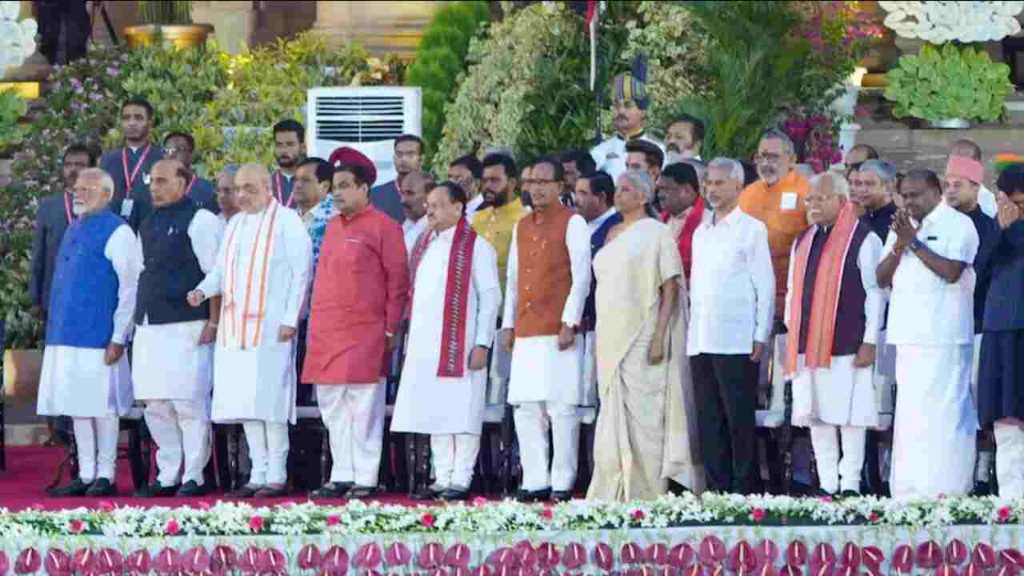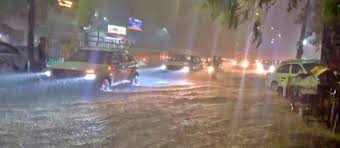29 OBC, 28 General, 10 SC, 5 ST, 7 women… understand the social engineering of Modi cabinet

The Modi government has started for the third time in a row in the country. Narendra Modi took oath as the Prime Minister in the swearing-in ceremony held at Rashtrapati Bhavan on the evening of June 9. Along with Prime Minister Narendra Modi, 71 ministers also took oath of office and secrecy. There is new social engineering in PM Modi’s new cabinet and also attention to the politics of the states. Along with the new voter class, there is focus on the core voter and women who are considered silent voters are also represented in the government. How many ministers have been made from which caste-class?
Other Backward Classes (OBC) and SEBC, which were at the center of the strategy of the opposition India Block during the election campaign, have been given the highest representation in the Modi cabinet. 27 ministers have been made from OBC and 2 from SEBC (extremely backward class), a total of 29 ministers have been made from this class. It is worth noting that SEBC is a sub-class of OBC. After OBC-EBC comes the general category. 28 ministers have been made from the general category, which is considered the core voter of BJP, 10 from Scheduled Caste (SC) and five from Scheduled Tribe category in Modi government. One minister has also been made from Christian community.
Eight Brahmin ministers, two Yadav ministers
BJP has also managed caste arithmetic through the cabinet in Modi government 3.0. 28 ministers have been made from the general category, which is considered the core voter of BJP. If seen on caste basis, eight Brahmins and three Rajput leaders have been made ministers. There are two ministers each from Bhumihar, Yadav, Jat, Kurmi, Maratha, Vokkaliga category in Modi government. Two ministers are also from Sikh community, which includes Jat and Punjabi Khatri. Along with the influential Lingayat community of Karnataka, one face has also been made minister from Nishad, Lodh caste and Mahadalit class. Along with the influential Matua community of West Bengal, one leader each from Ahir, Gurjar, Khatik, Bania class have also been successful in making a place in the cabinet.
10 ministers from UP, 8 from Bihar
If we look at the states, then Uttar Pradesh, the largest state in terms of seats, has the maximum number of 10 ministers including PM Modi. Rajnath Singh, Jitin Prasad, Pankaj Chaudhary, Kamlesh Paswan, SP Singh Baghel, BL Verma, Kirtivardhan Singh as well as RLD chief Jayant Chaudhary and Apna Dal (Sonelal) chief Anupriya Patel have also been made ministers in Modi Government 3.0. Bihar is second in terms of cabinet berths. Bihar has got eight ministerial posts in the Modi cabinet. Four BJP leaders – Giriraj Singh, Nityanand Rai, Satish Chandra Dubey and Rajbhushan Chaudhary as well as Lallan Singh from JDU quota and Ramnath Thakur, son of former Chief Minister Bharat Ratna Karpuri Thakur, have been made ministers. Chirag Paswan from LJP quota and Jitan Ram Manjhi from HAM Party quota have also been made ministers in Modi Government 3.0.
From Gujarat, Amit Shah, CR Patil, Mansukh Mandaviya, Nimuben Bambhaniya have been made ministers in the Modi government. From Maharashtra, Piyush Goyal, Nitin Gadkari, Muralidhar Mohol and Raksha Khadse, along with Shiv Sena’s Pratap Rao Jadhav, RPI (A)’s Ramdas Athawale have been made ministers.
Four ministers have been made from Rajasthan in the Modi government. Gajendra Singh Shekhawat, Arjun Ram Meghwal and Bhupendra Yadav, who were ministers in the previous government, along with Jat face Bhagirath Chaudhary have also been given a place in the Modi 3.0 cabinet. Five ministers have been made from Madhya Pradesh – Shivraj Singh Chouhan, Jyotiraditya Scindia, Savitri Thakur, Durgadas Uike and Virendra Kumar.
See the list of all cabinet ministers
Cabinet Ministers
- Narendra Modi (Prime Minister)
- Rajnath Singh
- Amit Shah
- Nitin Gadkari
- JP Nadda
- Shivraj Singh
7 . Nirmala Sitaraman - S Jaishankar
- Manohar Lal Khattar
- HD Kumaraswamy
- Piyush Goyal
- Dharmendra Pradhan
- Jitan Ram Manjhi
- Rajiv Ranjan alias Lalan Singh
- Sarbananda Sonowal
- Dr. Virendra Kumar
- Ram Mohan Naidu
- Prahlad Joshi
- Jual Oram
- Giriraj Singh
- Ashwini Vaishnav
- Jyotiraditya Scindia
- Bhupendra Yadav
- Gajendra Singh Shekhawat
- Annapurna Devi
- Kiran Rijiju
- Hardeep Puri
- Mansukh Mandaviya
- G Kishan Reddy
- Chirag Paswan
- CR Patil
Minister of State (Independent Charge)
- Rao Indrajit Singh
- Jitendra Singh
- Arjun Ram Meghwal
- Prataprao Ganapatrao Jadhav
- Jayant Chaudhary
Minister of State
- Jitin Prasada
- Shripad Yasho Naik
- Pankaj Chaudhary
- Krishnapal Gurjar
- Ramdas Athawale
- Ramnath Thakur
- Nityanand Rai
- Anupriya Patel
- V Somanna
- Chandrashekhar Pemmasani
- SP Singh Baghel
- Shobha Karandlaje
- Kirtivardhan Singh
- BL Verma
- Shantanu Thakur
- Suresh Gopi
- L Murugan
- Ajay Tamta
- Bandi Sanjay
- Kamlesh Paswan
- Bhagirath Chaudhary
- Satish Dubey
- Sanjay Seth
- Ravneet Singh Bittu
- Durgadas Suike
- Raksha Khadse
- Sukanto Majumdar
- Savitri Thakur
- Tokhan Sahu
- Rajbhushan Chowdhary
- Srinivas Verma
- Harsh Malhotra
- Nimuben Bambhania
- Muralidhar Mohol
- George Kurien
- Pabitra Margherita






